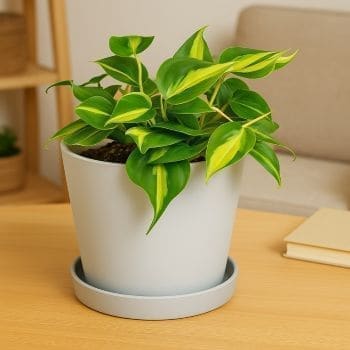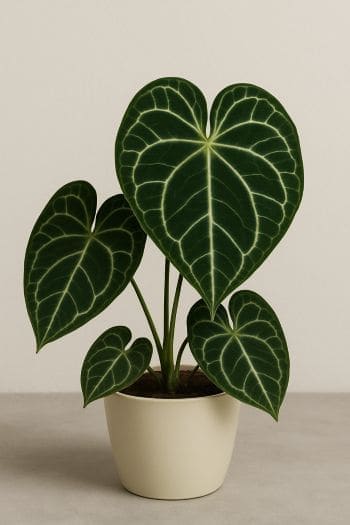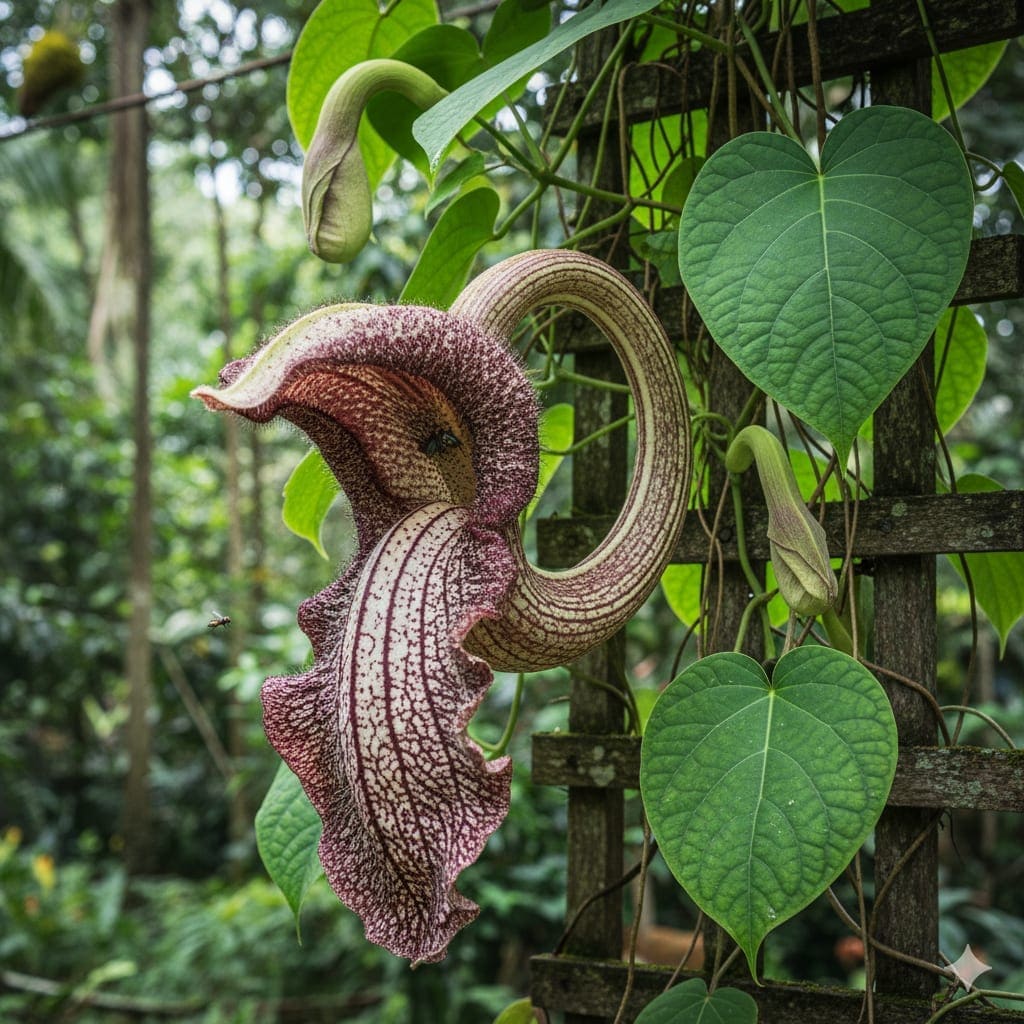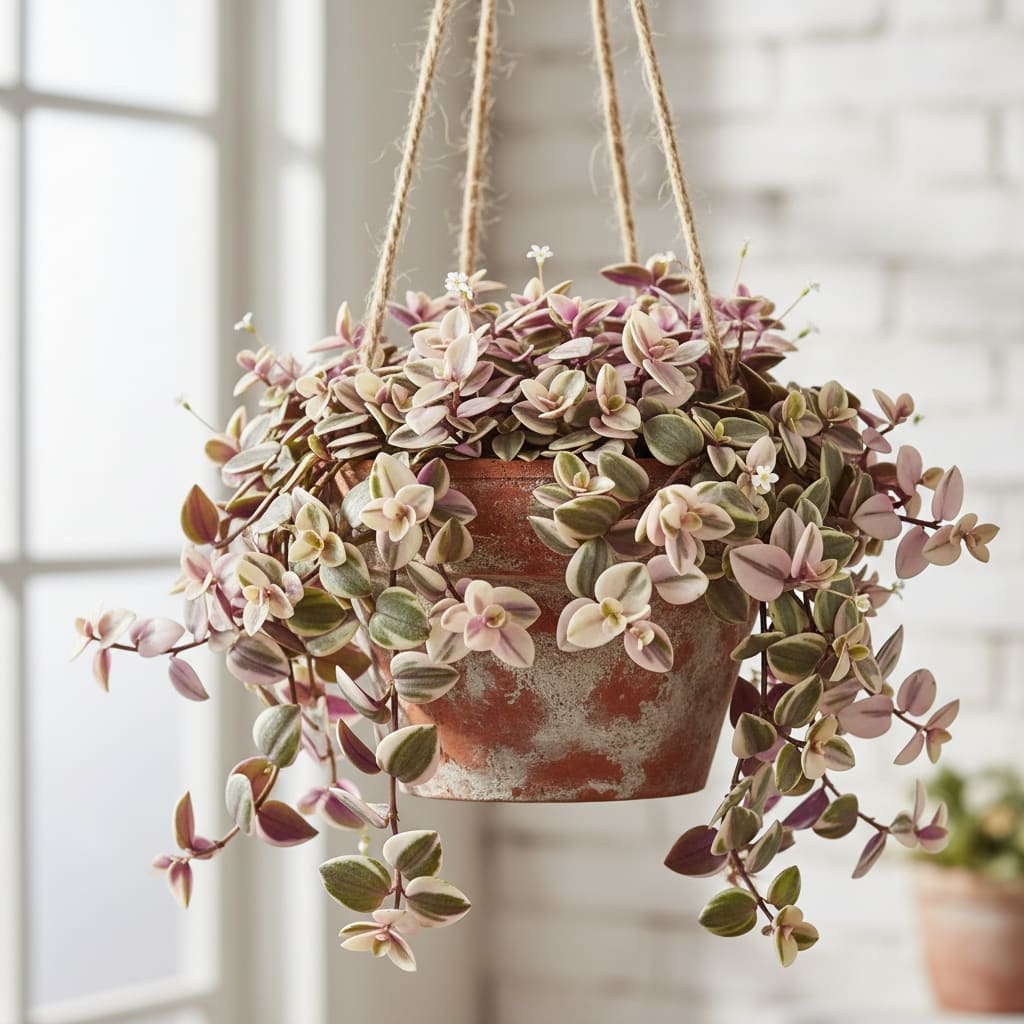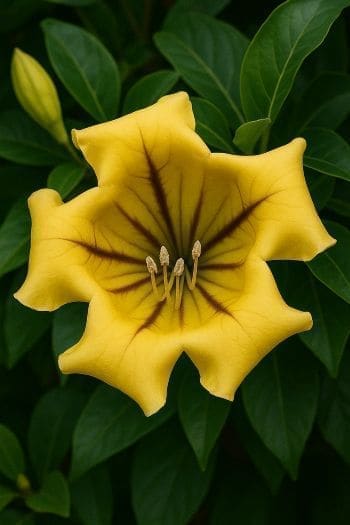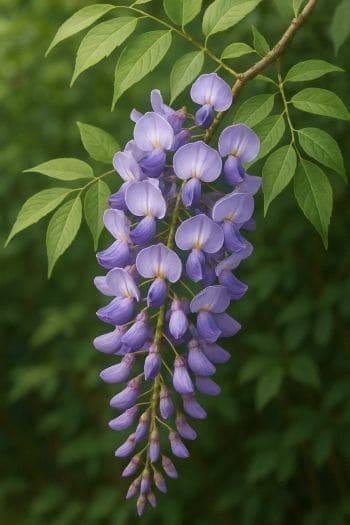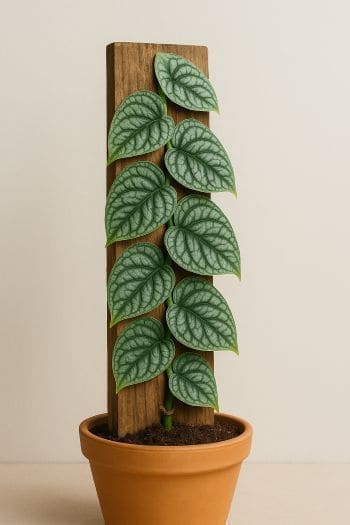Philodendron hederaceum ‘Brasil’ Care & Growing Guide
Overview
Philodendron hederaceum ‘Brasil’ is a striking variegated cultivar of the heartleaf philodendron, native to the tropical rainforests of Central and South America. Known for its trailing vines and vibrant green leaves streaked with golden-yellow, this plant is a favorite among indoor gardeners for its beauty and forgiving nature. It adapts well to a range of indoor conditions, making it suitable for beginners and seasoned plant lovers alike. Its variegation results from a natural mutation, ensuring that no two leaves are exactly alike.
Identification & Growth Habit
Philodendron Brasil has heart-shaped leaves with irregular splashes and stripes of lime to golden-yellow variegation against a deep green background. The plant exhibits a trailing or climbing growth habit, producing long, flexible stems that can cascade from shelves or be trained upward on supports. In its native habitat, it climbs trees using aerial roots to reach higher light levels. Indoors, it can reach several feet in length if given proper care and support.
Light & Placement
This plant thrives in bright, indirect light, which helps maintain its vivid variegation. Too little light may cause the leaves to revert to solid green and the stems to elongate. Avoid harsh, direct sunlight, which can scorch the foliage. Ideal placements include near an east- or north-facing window, or a few feet back from a bright south- or west-facing window with sheer curtains for diffusion.
Watering & Humidity
Allow the top 2–3 inches of soil to dry before watering thoroughly. Ensure excess water drains freely from the pot, and never let the plant sit in waterlogged soil to avoid root rot. Philodendron Brasil prefers moderate watering—overwatering is a more common problem than underwatering.
While it adapts to average household humidity, higher humidity levels (above 60%) encourage larger leaves and vigorous growth. Increase humidity by grouping plants, using a pebble tray, misting occasionally, or placing the plant near a humidifier.
Soil & Repotting
Use a well-draining potting mix such as a blend of peat moss, perlite, and orchid bark. A container with drainage holes is essential to prevent water accumulation at the roots. Repot every 1–2 years in spring when the plant becomes root-bound or the soil has degraded. Choose a pot one size larger to allow for steady growth without excessive moisture retention.
Fertilizing
Feed monthly during the active growing season (spring and summer) with a balanced liquid houseplant fertilizer diluted to half strength. Avoid fertilizing in fall and winter when growth slows. Overfertilization can lead to salt buildup and root damage, so flush the soil with plain water every few months to remove excess minerals.
Pruning & Training
Regular pruning helps control size, encourage bushier growth, and remove damaged leaves. Use clean, sharp scissors or pruners to cut just above a node. For a climbing display, train stems onto a moss pole, trellis, or wall hooks. If trailing, allow vines to cascade from hanging baskets or shelves. Periodically rotate the plant to promote even growth on all sides.
Propagation
Step-by-Step Stem Cutting Method
- Select a healthy vine with at least 2–3 leaves and visible nodes.
- Using sterilized scissors, cut just below a node.
- Remove the lowest leaf to expose the node for rooting.
- Place the cutting in water or directly into moist, well-draining soil.
- If rooting in water, change the water every few days to prevent stagnation.
- Once roots are 2–3 inches long, transfer water-rooted cuttings into soil.
- Keep the new plant in bright, indirect light and maintain evenly moist soil until established.
Common Problems
Pests
- Spider mites: Look for fine webbing and stippled leaves. Treat with insecticidal soap or neem oil and increase humidity.
- Mealybugs: Identify by white, cottony clusters on stems and leaf nodes. Remove manually with a cotton swab dipped in alcohol, then treat with horticultural oil.
- Aphids: Small green or black insects on new growth. Rinse off with water and follow up with insecticidal soap if needed.
Diseases
- Root rot: Caused by overwatering or poor drainage. Remove affected roots, repot in fresh soil, and adjust watering habits.
- Leaf spot: Brown or yellow spots may indicate fungal or bacterial infection. Remove affected leaves and improve air circulation.
Toxicity & Pet Safety
Philodendron Brasil is toxic to pets and humans if ingested due to calcium oxalate crystals. Keep out of reach of cats, dogs, and children. Symptoms in pets may include drooling, oral irritation, and vomiting. Contact a veterinarian if ingestion is suspected.
Styling & Decor Tips
Use Philodendron Brasil in hanging baskets for a dramatic trailing effect, or train it up a moss pole for a lush, vertical accent. Its bold variegation pairs well with solid green plants for visual contrast. Place it in decorative cachepots or ceramic planters to complement its vibrant foliage.
Varieties & Cultivars
Philodendron hederaceum has several cultivars, but ‘Brasil’ is among the most popular for its unique variegation. Related varieties include:
- Philodendron hederaceum ‘Lemon Lime’: Bright chartreuse leaves without dark green margins.
- Philodendron hederaceum ‘Micans’: Velvety, deep green to bronze foliage with a trailing habit.
Buying Tips & Maturity
When purchasing, look for plants with multiple healthy vines, vibrant variegation, and no signs of pests or disease. Avoid specimens with yellowing leaves or mushy stems. Mature plants can produce longer vines and larger leaves, especially when given climbing support and optimal light.
Seasonal Care
- Spring/Summer: Active growth period—fertilize monthly, water regularly, and consider repotting if root-bound.
- Fall/Winter: Growth slows—reduce watering frequency, stop fertilizing, and keep away from cold drafts.
FAQ
- How fast does Philodendron Brasil grow? In optimal conditions, it can produce several inches of new vine growth per month during the growing season.
- Can it live in low light? It can survive in low light but will likely lose variegation and become leggy.
- Should I mist my Philodendron Brasil? Misting can help in dry environments, but a humidifier is more effective for sustained humidity.
- How do I make it bushier? Prune back long vines just above a node to encourage branching and fuller growth.
- Is it safe for cats? No, it is toxic to cats and should be kept out of their reach.
Troubleshooting Growth Issues
- Leggy growth with small leaves: Indicates insufficient light—move closer to a bright, indirect light source.
- Faded variegation: Often due to low light; increase exposure without direct sun to restore color contrast.
- Yellowing lower leaves: Can be a sign of overwatering or natural leaf aging; check soil moisture before adjusting care.
- Brown, crispy leaf edges: Usually caused by low humidity or underwatering—raise humidity or adjust watering schedule.
Advanced Pruning & Training Techniques
For a fuller display, try pinching the tips of actively growing vines to stimulate side shoots. To create a living wall effect, attach vines to a grid panel and guide aerial roots into moist sphagnum moss pockets. For a tiered look in hanging baskets, prune selectively to maintain cascading layers of varying lengths.
Companion Plant Suggestions
Pair Philodendron Brasil with plants that have contrasting textures or colors for dynamic arrangements:
- Calathea orbifolia: Large, patterned leaves complement the Brasil’s variegation.
- Pothos ‘Marble Queen’: Similar care needs with a different variegation pattern for visual interest.
- Ferns (e.g., Boston fern): Soft, feathery foliage contrasts with the Brasil’s bold leaves.
Seasonal Care Calendar
| Season | Care Focus |
|---|---|
| Early Spring | Resume fertilizing, prune to shape, and repot if needed. |
| Late Spring–Summer | Maintain consistent watering, train vines, and monitor for pests. |
| Autumn | Reduce feeding, check for drafts, and clean foliage to maximize light absorption. |
| Winter | Minimize watering, maintain humidity, and avoid cold windowsills. |
